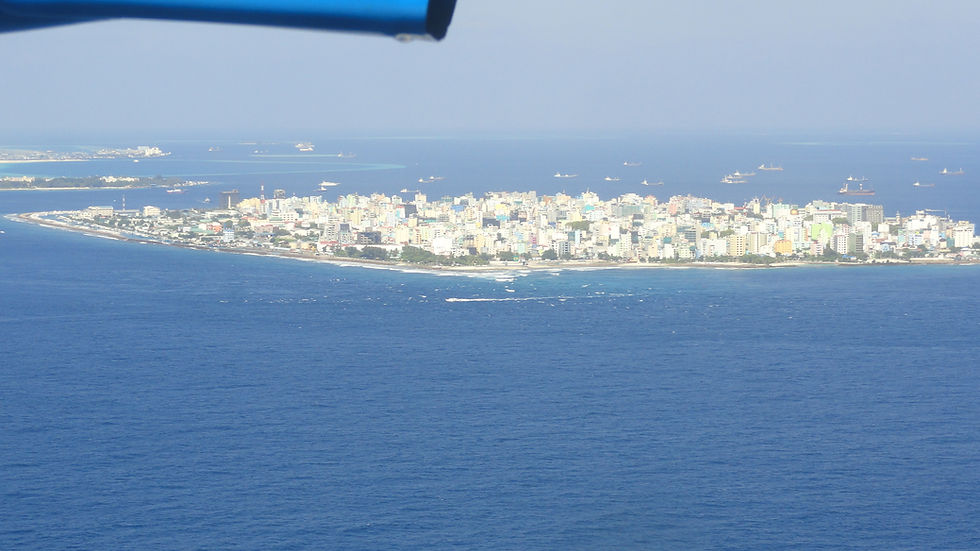Maldives
- Martin
- Jan 20, 2010
- 3 min read
Maldives, officially the Republic of the Maldives, is an island nation in the Indian Ocean–Arabian Sea area, consisting of a double chain of twenty-six atolls, oriented north-south, that lie between Minicoy Island (the southernmost part of Lakshadweep, India) and the Chagos Archipelago. The chains stand in the Laccadive Sea, and the capital, Malé is about 600 kilometres (370 mi) south-west of India and 750 kilometres (470 mi) south-west of Sri Lanka. Maldives has been an independent polity for the majority of its history, except for three periods in which it was ruled by outside forces. In the mid-16th century, for fifteen years, the Maldives was dominated by the Portuguese Empire. In the mid-17th century, the Dutch Empire (Malabar) dominated Maldives for four months. Finally, in the late 19th century, on the brink of war, the Maldives became a British protectorate from 1887 until 1965. The Dutch referred to the islands as the "Maldivische Eilanden", while the British anglicised the local name for the islands first to the "Maldive Islands" and later to the "Maldives". The islands gained independence from the British Empire in 1965, and in 1968 became a republic ruled by a president and an authoritarian government. The Maldives archipelago is located on top of the Chagos-Maldives-Laccadive Ridge, a vast submarine mountain range in the Indian Ocean. Maldives also form a terrestrial ecoregion together with the Chagos and the Lakshadweep. The Maldives atolls encompass a territory spread over roughly 90,000 square kilometres (35,000 sq mi), making the country one of the world's most geographically dispersed. Its population of 328,536 (2012) inhabits 192 of its 1,192 islands. In 2006, Maldives' capital and largest city Malé, located at the southern edge of North Malé Atoll, had a population of 103,693. Malé is one of the Maldives' administrative divisions and, traditionally, it was the "King's Island" where the ancient Maldives royal dynasties were enthroned. The Maldives is the smallest Asian country in both population and land area. With an average ground level elevation of 1.5 metres (4 ft 11 in) above sea level, it is the planet's lowest country. It is also the country with the lowest natural highest point in the world, at 2.4 metres (7 ft 10 in). Forecasts predicting future inundation of the Maldives due to rising sea levels are of great concern to its people. The Maldives has pledged to become a carbon-neutral country by 2019 Malé is the capital and most populous city in the Republic of Maldives. The city is geographically located at the southern edge of North Malé Atoll (Kaafu Atoll). Administratively, it is a city-class constituency and is governed by the Malé City Council. Traditionally it was the King's Island, from where the ancient Maldive Royal dynasties ruled and where the palace was located. The city was then called "Mahal". Formerly it was a walled city surrounded by fortifications and gates (doroshi). The Royal Palace (Gan'duvaru) was destroyed along with the picturesque forts (kotte) and bastions (buruzu) when the city was remodelled under President Ibrahim Nasir's rule in the aftermath of the abolition of the monarchy. However, the beautifully decorated Malé Friday Mosque remains. In recent years, the island has been considerably expanded through land-filling operations. Over the years, with the fight for democracy, Malé has been the epicenter of political protests and milestone events.



Comments